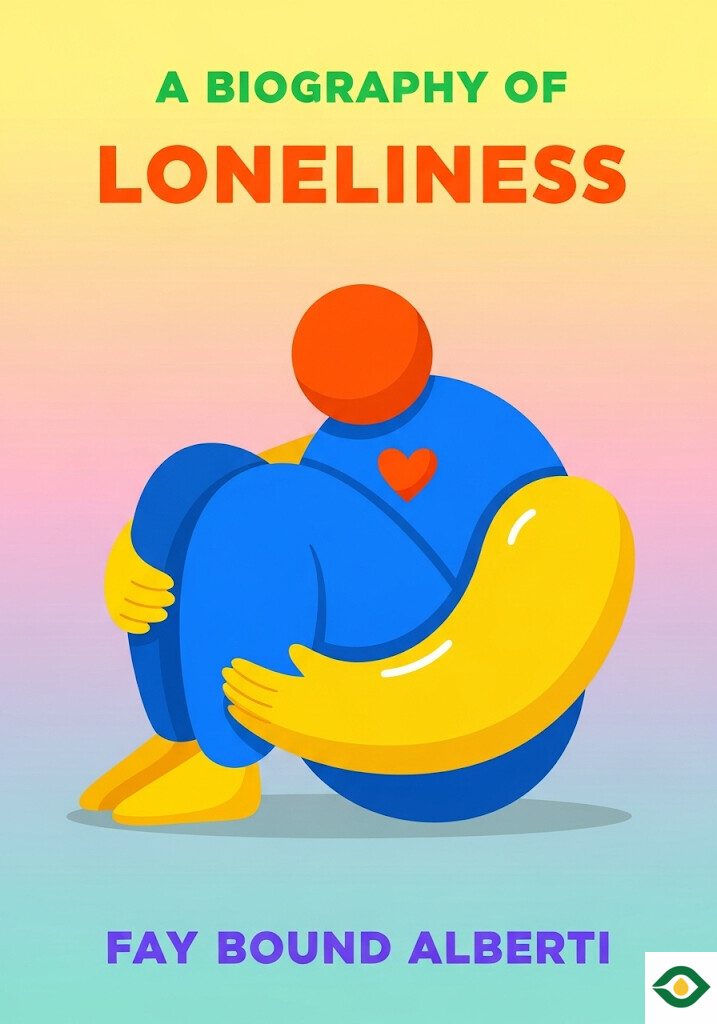Description
Loneliness feels so natural to us that many assume it has always been part of human life. But surprisingly, the idea of loneliness, as we know it, is very recent. Just a couple of centuries ago, people did not use the word in the way we do today. They spoke instead about “solitude” or “oneliness,” which were often viewed positively, especially when linked with prayer, reflection, or closeness to God. It was only in the nineteenth century that loneliness became understood as a painful and harmful condition, one that many now call an epidemic.
This shift has everything to do with social change. In earlier centuries, people rarely lived completely alone. Families spanned generations under the same roof, religion gave people constant spiritual company, and community bonds were stronger. Being by oneself was not automatically seen as negative—it could even be inspiring. But as society moved toward industrialization, urbanization, and individualism, the meaning changed. Loneliness became a sign of something missing, a lack that could not easily be filled.
By the mid-nineteenth century, loneliness was already linked with illness, grief, and loss. Queen Victoria famously spent decades mourning her husband Albert, filling her diaries with the word “loneliness” as she surrounded herself with his clothes and belongings. This was very different from earlier widows or widowers, who often found comfort in their faith. The loss was just as real, but the interpretation of it was shaped by the cultural meaning of loneliness at the time.
At the same time, literature and art helped spread the idea of loneliness as a defining human condition. Writers like Emily Brontë gave romantic love an almost spiritual role in life. In Wuthering Heights, Heathcliff’s desperate cry that he could not live without his soul became a symbol of how relationships defined meaning. Later works, from poetry to modern novels like Twilight, carried forward the idea of soulmates, making people believe that without a perfect partner, they were incomplete. This expectation, while powerful, also made it easier for people to feel lonely even in the midst of family or friends.
The twentieth and twenty-first centuries brought more reasons why loneliness spread. Families became smaller, religion lost much of its social influence, and people began to live alone in growing numbers. Even as technology created new ways to connect, it also raised new challenges. The telephone was once feared for breaking traditional social habits. Today, the same is often said about social media. Platforms can bring people together, but they also create the fear of missing out—FOMO—when users compare their lives to the glamorous images posted by others. For many young people, social media magnifies feelings of exclusion and isolation. Still, research shows that the harm depends on how it is used. If it replaces real-world contact, it can deepen loneliness. If it is balanced with offline connections, it can actually strengthen relationships.
Loneliness also carries heavy health costs. Doctors now compare it to smoking or obesity, both in its prevalence and its consequences. Studies show that loneliness raises the risk of heart disease, stroke, depression, dementia, and even premature death. The body and mind both respond to loneliness, with feelings of pain, coldness, or emptiness that mirror physical hunger. Just as hunger signals that we need food, loneliness signals that we need connection. But unlike hunger, the need is not always met, and the cycle can continue for years.
Older people are among the most affected. As lifespans increase, more and more elderly people live alone, sometimes without close family nearby. In many Western countries, governments and communities have not kept up with the growing need for support. The elderly often face unmet needs—not only for physical care but also for companionship. Care homes can provide some relief, but simply grouping people together does not always cure loneliness. What is needed is a deeper cultural change: instead of treating old age as a burden or a separate stage of uselessness, society must recognize the continuing value of older people and include them more fully.
Still, loneliness is not always negative. Some artists and writers have chosen solitude deliberately, finding that being alone helps them create. Virginia Woolf, for example, described how loneliness, while painful, could also sharpen her art. Rainer Maria Rilke spoke about the importance of withdrawing from the world to discover the inner self. But these cases highlight an important distinction: choosing solitude is very different from being forced into loneliness. Privileged artists could rejoin society when they wished, but those trapped in poverty, displacement, or chronic isolation have no such choice. For them, loneliness is not a source of inspiration but of suffering.
When we look at the bigger picture, loneliness reflects the times we live in. The rise of individualism, the decline of religious frameworks, the reshaping of family life, and economic systems that reward competition over cooperation all contribute. Thinkers like Charles Darwin influenced not only science but also society, as his ideas of survival and competition filtered into economics and politics. Later, neoliberal policies reinforced this focus on the individual, leaving less space for collective care. The result is a society where people who need support often struggle to find it, deepening feelings of isolation.
What can be done? First, we should stop thinking of loneliness as inevitable, or as a disease that has always existed. History shows it is a modern condition, only about two centuries old. That means it is not fixed—it can be changed. Stronger social care, more inclusive communities, and a reevaluation of how we value human connection are all essential steps. We must move away from the idea that loneliness is just a private issue for individuals to solve, and recognize that it is deeply shaped by culture, economics, and history.
Loneliness is powerful because it touches everyone, in different ways, at different times of life. It is not the same as simply being alone, nor is it always bad. But left unaddressed, it can become one of the most serious problems of our age. Understanding its history gives us hope. If loneliness is not timeless but created by modern life, then modern life can also find new answers. By rethinking our priorities—valuing connection, meeting real needs, and respecting every stage of life—we can begin to ease the weight of loneliness and move toward a healthier, more connected world.





